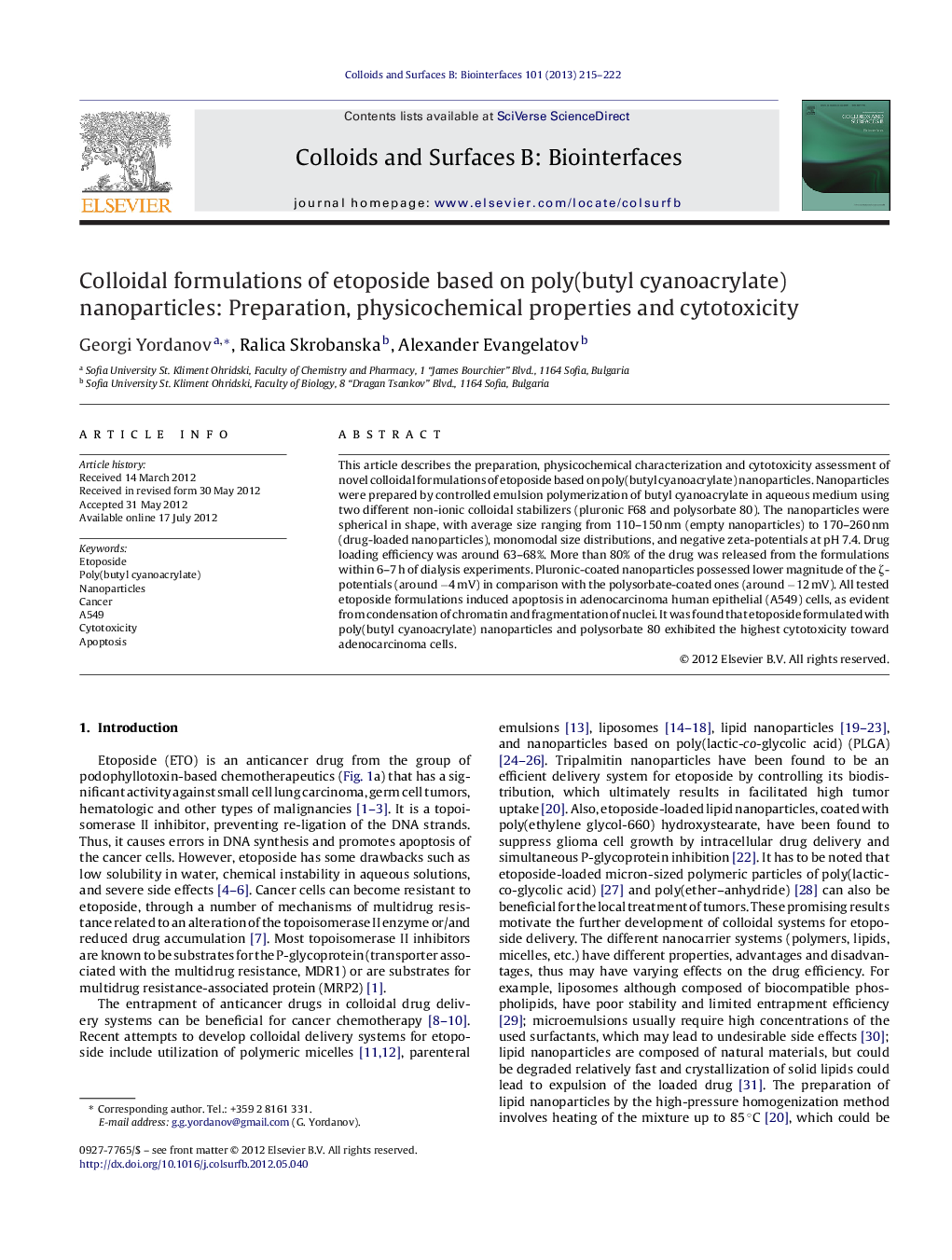| Article ID | Journal | Published Year | Pages | File Type |
|---|---|---|---|---|
| 600449 | Colloids and Surfaces B: Biointerfaces | 2013 | 8 Pages |
This article describes the preparation, physicochemical characterization and cytotoxicity assessment of novel colloidal formulations of etoposide based on poly(butyl cyanoacrylate) nanoparticles. Nanoparticles were prepared by controlled emulsion polymerization of butyl cyanoacrylate in aqueous medium using two different non-ionic colloidal stabilizers (pluronic F68 and polysorbate 80). The nanoparticles were spherical in shape, with average size ranging from 110–150 nm (empty nanoparticles) to 170–260 nm (drug-loaded nanoparticles), monomodal size distributions, and negative zeta-potentials at pH 7.4. Drug loading efficiency was around 63–68%. More than 80% of the drug was released from the formulations within 6–7 h of dialysis experiments. Pluronic-coated nanoparticles possessed lower magnitude of the ζ-potentials (around −4 mV) in comparison with the polysorbate-coated ones (around −12 mV). All tested etoposide formulations induced apoptosis in adenocarcinoma human epithelial (A549) cells, as evident from condensation of chromatin and fragmentation of nuclei. It was found that etoposide formulated with poly(butyl cyanoacrylate) nanoparticles and polysorbate 80 exhibited the highest cytotoxicity toward adenocarcinoma cells.
Graphical abstractNanoparticle-formulated etoposide (ETO-PBCA-P80) induces apoptotic cell death in A549 cells. Condensation of chromatin and fragmentation of nuclei are observed (shown with arrows).Figure optionsDownload full-size imageDownload as PowerPoint slideHighlights► Etoposide formulations with poly(butyl cyanoacrylate) nanoparticles are prepared. ► The surfactant affected the ζ-potentials of the nanoparticles. ► Polysorbate 80 increased the cytotoxicity of the nanoparticle-formulated drug on A549 cells. ► The nanoparticle-formulated etoposide induced apoptotic cell death in A549 cells.
